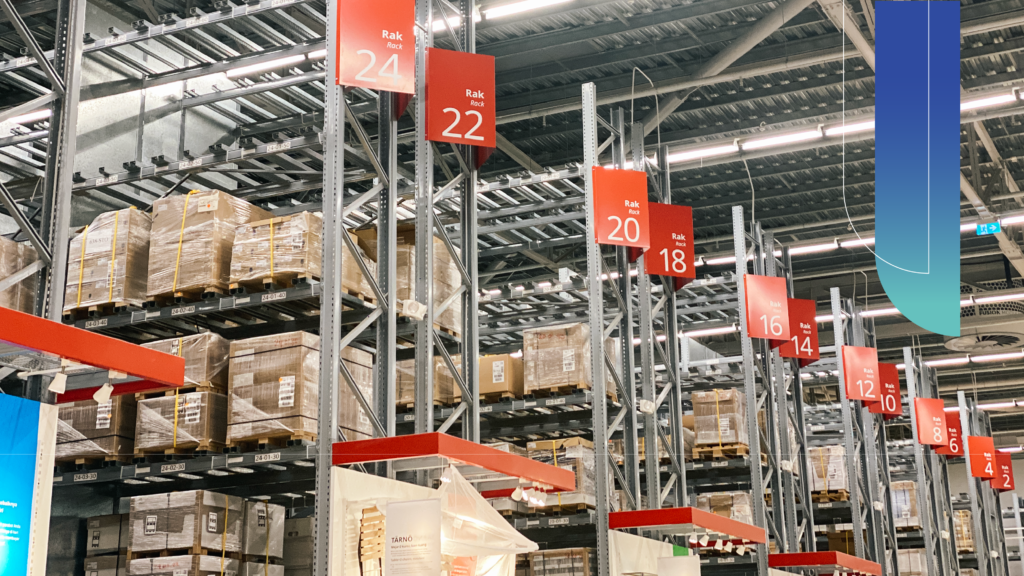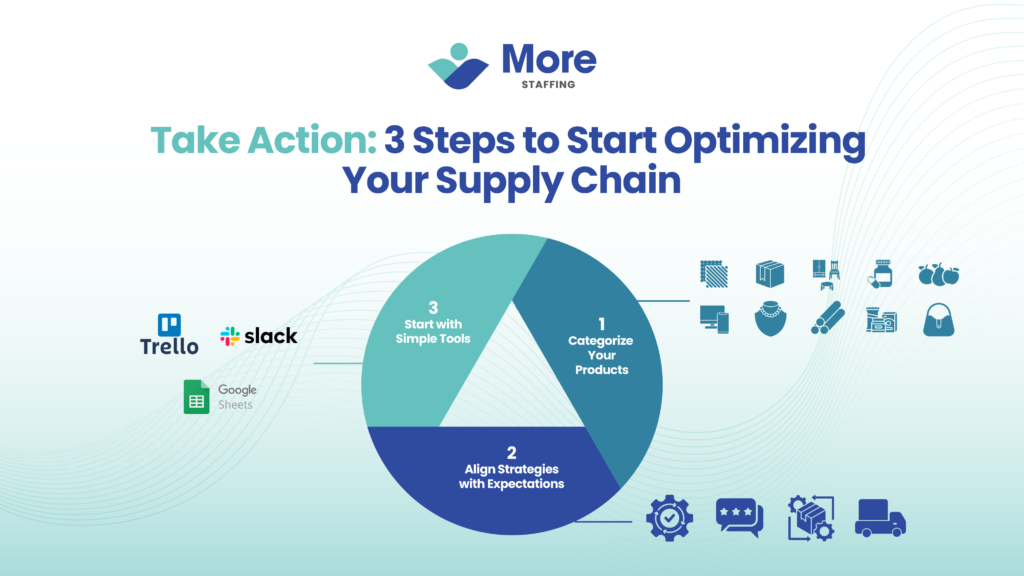Some things just haven’t aged well—like fax machines, phone books, and those clunky old keyboards that sound like construction sites. Unfortunately, some outdated supply chain practices fall into the same category. Businesses still lose time and money by treating all products the same, ignoring one of the simplest ways to optimize operations: product categorization.
If you’re managing a supply chain without understanding what kind of products you’re dealing with, you’re setting yourself up for delays, inefficiencies, and rising costs. It’s time to stop operating on guesswork and start building strategies tailored to your product needs.
In our “Categorize to Optimize” webinar, supply chain experts Lara Guevara and Glaiza Ilagan revealed how categorizing products properly can streamline operations, reduce costs, and make your business more profitable. This blog highlights a few of the must-know insights—but if you’re ready for the full playbook, watch the Categorize to Optimize Webinar On-Demand and grab our free Product Categorization Template to get started today.
1. Why Product Categorization is a Game-Changer

Imagine this: You’re storing perishable goods like fresh food the same way you’d stock t-shirts or handling luxury skincare products like bulk industrial supplies. The result? Spoiled inventory, damaged goods, unhappy customers, and profit out the window.
Product categorization solves that problem by helping you treat products for what they are—not what’s convenient.
Here are the 10 key product categories you need to know:
- Raw Materials – Fabrics, metals, or chemicals used in production.
- Finished Goods – Ready-to-sell products like apparel or accessories.
- Formulated Goods – Skincare, supplements, and personal care items.
- Perishables – Goods with short shelf lives, such as fresh food or flowers.
- Bulk Products – High-volume items like industrial supplies or grains.
- Custom-Built Products – Tailored items like bespoke furniture.
- High-Tech Electronics – Laptops, gadgets, or smart devices.
- FMCG (Fast-Moving Consumer Goods) – Snacks, toiletries, and beverages.
- Luxury Goods – Premium products requiring exceptional care and presentation.
- Assembled Products – Furniture kits or DIY craft sets.
Mismanaging these categories can quickly snowball into inefficiencies. For example, perishables need temperature-controlled storage and rapid delivery, while luxury goods demand premium packaging and secure shipping.
The key takeaway? Not all products are created equal. Knowing where your products fall helps you optimize storage, logistics, and delivery, saving time, money, and resources.
Not sure where to start? Download our free Product Categorization Template to organize your product line and identify where you can improve.
2. Matching Your Supply Chain Strategy to Consumer Expectations

Your customers expect certain things from you, whether it’s overnight delivery, premium unboxing experiences, or reliable stock availability. Aligning your supply chain strategies with those expectations is essential for staying competitive.
Let’s break it down by product type:
- Luxury Goods: Customers expect exclusivity, premium packaging, and meticulous handling. Think luxury skincare or designer items—presentation is everything, and delays are not an option.
- FMCG (Fast-Moving Consumer Goods): Products like snacks or toiletries thrive on speed and affordability. Customers want these items available at all times, and stockouts can quickly send them to your competitors.
- High-Tech Electronics: Buyers want reliability. These products often require secure shipping, proper storage, and frequent updates on delivery status to ensure peace of mind.
If you fail to align with these expectations, the consequences are obvious: negative reviews, dissatisfied customers, and damaged brand reputation. By tailoring your logistics, packaging, and inventory strategies to meet customer needs, you create a seamless experience that keeps them coming back.

3. Hybrid Products: Managing the Best (and Worst) of Both Worlds
Not every product fits neatly into a single category. Some straddle the line between multiple types, and that’s where things get tricky.
Examples of hybrid products include:
- Smart Home Devices: These combine assembled product components with sensitive high-tech electronics.
- Vitamin-Infused Beverages: These mix formulated goods (vitamins) with FMCG qualities like mass-market appeal and fast turnover.
- Luxury Perishables: Premium cheeses, caviar, or gourmet chocolates require both temperature control and premium presentation.
Hybrid products require blended strategies that combine the best practices of multiple categories. For instance, a luxury perishable product needs cold-chain logistics (like a perishable) and upscale packaging (like a luxury good) to meet customer expectations.

Managing hybrid products comes down to precision. By identifying their unique needs early, you can tailor sourcing, packaging, and shipping strategies to prevent inefficiencies and costly mistakes.
4. Take Action: 3 Steps to Start Optimizing Your Supply Chain
Ready to get your supply chain on track? Follow these three simple steps to get started:
- Categorize Your Products: Define your product types and identify any hybrid products. Clear categorization sets the foundation for smarter decisions.
- Align Strategies with Expectations: Figure out what your customers value most—whether that’s speed, luxury, or reliability—and tailor your supply chain processes to deliver on those needs.
- Start with Simple Tools: Use tools like Asana or Trello to manage timelines, Slack for real-time communication, and beginner-friendly platforms like Google Sheets to track inventory.
Optimizing your supply chain doesn’t need to be overwhelming. Start small, evaluate regularly, and build on strategies that work.

For a practical guide to product categorization, download our free Product Categorization Template. Want the full playbook? Watch the Categorize to Optimize Webinar On-Demand for deeper strategies and insights.
Conclusion: Stop Treating All Products the Same
Supply chain success starts with the basics: understanding your products. By categorizing them properly, aligning with customer expectations, and tailoring your strategies to each product’s unique needs, you can save time, cut costs, and delight your customers.
This blog gave you the highlights, but we didn’t stop here. For a full breakdown of actionable strategies, advanced tips, and insights from supply chain experts Lara Guevara and Glaiza Ilagan, watch the Categorize to Optimize Webinar On-Demand. Ready to take action? Download our free Product Categorization Template and start transforming your supply chain today.




